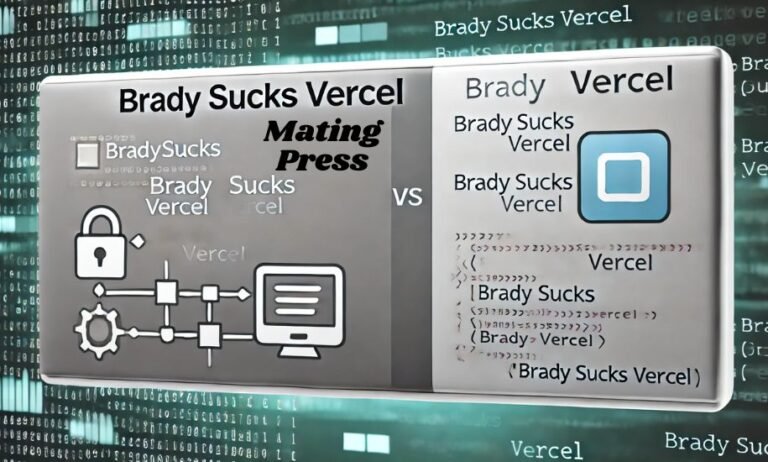Deadlock is a term that often strikes fear into the hearts of developers and system administrators alike. It’s like a traffic jam in your code, where processes come to an unexpected halt, waiting endlessly for one another to release resources. Imagine working on an essential application only to find it stuck in limbo, unable to move forward. This frustrating scenario can lead to significant downtime and lost productivity.
But what exactly causes deadlocks? How can you detect them before they wreak havoc on your systems? In this post, we’ll explore the intricacies of deadlock detection—unpacking its common causes, various detection methods, and techniques for prevention. Whether you’re a seasoned coder or a curious beginner, understanding these concepts will arm you with valuable insights to keep your programs running smoothly. Let’s dive deeper into the world of deadlocks!
What is deadlock?
Deadlock occurs in computing when two or more processes become stuck, each waiting for a resource held by another. It’s like a standoff where no one can proceed because they’re all holding something vital.
Imagine two trains on the same track heading toward each other. If neither is willing to backtrack, you have a classic deadlock scenario.
In software systems, this typically involves threads or processes that share resources such as memory locations, files, or database locks. When these entities are programmed in a way that creates circular dependencies, they can easily fall into this trap.
The result? The involved processes are rendered ineffective and unusable until external intervention takes place. Deadlocks must be detected and resolved promptly to maintain system performance and reliability. Understanding their nature is crucial for both developers and system administrators alike.
Common Causes of Deadlock
Deadlock occurs when programs or processes become stuck, unable to proceed due to competing resource demands. Several factors contribute to this frustrating scenario.
One common cause is resource contention. When multiple processes require the same resources simultaneously, they can end up waiting indefinitely for each other.
Another factor is improper handling of locks. If a program acquires a lock on one resource and tries to acquire another while holding that first lock, it creates an opportunity for deadlock.
Circular waiting also plays a significant role. This happens when two or more processes are in a circular chain, with each process waiting for a resource held by the next in line.
Insufficient memory allocation can lead to deadlock situations as well. If there isn’t enough memory available for all processes involved, some may block others from accessing necessary resources. Understanding these causes helps developers implement better strategies against deadlocks.
Types of Deadlock Detection
Deadlock detection can be approached through various methods, each with its unique characteristics. One prominent type is the wait-for graph method. This technique visualizes the relationships between processes and resources. If there’s a cycle in this graph, a deadlock exists.
Another approach involves resource allocation graphs. Here, nodes represent both processes and resources. Arrows indicate requests and allocations; cycles signal potential deadlocks.
Additionally, some systems implement timeouts on process waits. If a process exceeds a specific duration waiting for resources, it triggers an alert for further investigation.
There are algorithm-based solutions like the Banker’s Algorithm. It assesses system states to determine if resource requests can proceed safely or lead to deadlocks.
Each of these types provides different insights into detecting and understanding where deadlocks may occur within programs or systems.
Techniques for Detecting Deadlock
Detecting deadlock in a program requires careful analysis. Several techniques can help identify when processes are stuck waiting for each other.
One effective method is the Wait-For Graph. This visual representation maps out which processes are waiting on which resources. If you spot cycles within this graph, it signals potential deadlock scenarios.
Another approach is using timeouts on resource requests. By setting limits, you can force a process to relinquish its hold if it waits too long, helping to break any possible deadlocks.
Additionally, some systems implement periodic checks of resource allocation states. These snapshots allow developers to monitor and detect any unusual patterns or stagnation among processes before they escalate into serious issues.
Each technique has its strengths and weaknesses depending on your system’s architecture and requirements. Exploring various options ensures that your detection strategy aligns with your specific needs while maintaining efficiency.
Pros and Cons of Each Technique
When it comes to deadlock detection techniques, each has its strengths and weaknesses.
Resource allocation graphs are straightforward but can become complex with many resources and threads. They provide a visual representation that helps in understanding the relationships between processes. However, they may not scale well for larger systems.
On the other hand, wait-for graphs simplify this by focusing on process dependencies. While easier to manage, they might miss some intricate scenarios of resource contention.
Using timeouts is another approach. This method allows programs to recover automatically from potential deadlocks by forcing an operation to fail after a set duration. It’s effective but can lead to performance issues if set too aggressively.
Executing periodic checks adds robustness but may introduce overhead that affects system performance during peak usage times. Each technique has its place depending on system requirements and priorities.
Preventing and Resolving Deadlock
Preventing deadlock starts with careful resource allocation. Establish a protocol for how resources are requested and released. This approach minimizes the chances of multiple processes waiting indefinitely.
Another effective strategy is to implement timeouts. By setting limits on how long a process can wait for a resource, you reduce the risk of deadlock significantly. If a timeout occurs, the process can either retry or escalate an alert.
When dealing with existing deadlocks, detection tools become crucial. These tools analyze system states to identify locked resources and waiting processes.
Once detected, resolving deadlock often involves terminating one or more processes involved in it. This allows others to proceed while freeing up necessary resources.
Consider using advanced algorithms that dynamically manage resource allocation based on current demands and priorities. Such proactive measures equip systems to handle potential issues before they escalate into critical problems.
Understanding Deadlock and its Causes
Deadlock occurs when two or more processes are unable to proceed because each is waiting for the other to release resources. This stalemate can paralyze a system, leading to performance issues and potential crashes.
Several factors contribute to deadlocks. Resource contention often tops the list, especially in environments where multiple processes vie for limited assets. When these processes hold onto their allocated resources while waiting for others, deadlocks become inevitable.
Poorly designed algorithms may also lead to this condition. If process priorities aren’t well defined or if resource allocation isn’t managed effectively, systems can easily fall into a deadlock situation.
Additionally, user behavior plays a role. Developers might inadvertently create scenarios that invite deadlock through careless coding practices or by neglecting synchronization mechanisms. Understanding these causes equips programmers with the knowledge needed to avoid such pitfalls in their applications.
Signs to Look for in a Program
Detecting potential deadlocks in a program requires vigilance. Certain signs can indicate that your application may be struggling with this issue.
One of the most telling symptoms is an unexpected slowdown in performance. If processes begin to hang or take longer than usual, it’s time for closer examination.
Another red flag is increased resource usage without any clear justification. If memory or CPU usage spikes while no new tasks are being executed, deadlock might be at play.
Frequent timeouts when accessing shared resources can also signal trouble. This often happens when two or more processes are waiting indefinitely for each other to release resources.
User complaints about unresponsive features should not be ignored. These complaints might stem from deeper issues within the program’s structure related to resource management and allocation practices.
Techniques for Detecting Deadlock
Detecting deadlock requires a strategic approach, and several techniques can help identify the issue. One common method is using resource allocation graphs. This visual representation helps track which resources are held by which processes, making it easier to spot cycles that indicate deadlock.
Another technique involves timeout detection. In this scenario, if a task takes too long without progress, it’s flagged as potentially deadlocked. This allows systems to take corrective actions or restart the process.
Additionally, some systems implement wait-for graphs that outline how processes interact with one another for resources. Analyzing these graphs can reveal circular waits characteristic of deadlocks.
Employing algorithms like the Banker’s Algorithm offers proactive measures for detecting potential deadlocks before they arise by evaluating resource requests in real-time. Each technique has its unique strengths and applications within various programming environments.
Tools and Resources for Detecting Deadlock
Detecting deadlock can be challenging, but various tools and resources simplify the process. One popular choice is VisualVM, which allows developers to monitor Java applications in real-time. Its thread analysis feature helps identify potential deadlocks by visualizing lock contention.
For C and C++ programmers, Valgrind offers a suite of debugging tools that include detecting threading issues. It provides detailed reports on memory usage and lock behavior, making it easier to spot problems before they escalate.
Another useful resource is Deadlock Detector for Java threads. This tool specifically targets multithreaded applications and pinpoints where deadlocks may occur within your code.
Community-driven platforms like GitHub often host libraries or scripts designed for deadlock detection across various programming languages. These collaborative efforts foster innovation and provide valuable insights into resolving complex concurrency issues.
Prevention Strategies to Avoid Deadlock
Preventing deadlock is crucial for maintaining smooth program operation. One effective strategy is to impose a strict order on resource allocation. By ensuring that all threads request resources in the same sequence, you reduce the chances of circular wait conditions.
Another method involves using timeouts when requesting resources. If a thread cannot acquire needed locks within a specified timeframe, it should release any currently held locks and retry later. This approach can help break potential deadlocks before they escalate.
Resource allocation graphs also serve as an excellent preventive measure. By visualizing which processes hold or request resources, developers can spot potential conflicts early on.
Consider employing algorithms like Banker’s Algorithm for dynamic resource allocation. This will ensure that your system remains in a safe state while allocating resources efficiently and minimizing risk factors associated with deadlock scenarios.
Case Studies: Real-Life Examples of Deadlock Detection
Case studies provide valuable insights into deadlock detection in real-world scenarios. One notable example is a major online banking system that experienced frequent transaction failures due to deadlocks. Developers discovered that two processes were trying to lock the same database records but in different orders, leading to gridlock.
Another case involved a logistics company managing its fleet operations. Their scheduling software fell victim to deadlocks when multiple dispatch requests attempted simultaneous access to resource data. By analyzing the situation, engineers identified patterns and adjusted the locking mechanism, significantly improving workflow efficiency.
The gaming industry has also faced deadlocks during multiplayer sessions where players’ actions inadvertently blocked each other’s progress. Through rigorous testing and logging of interactions, developers implemented smarter resource management strategies that minimized these conflicts.
These examples illustrate how proactive analysis can lead to effective strategies for detecting and resolving deadlocks across various industries.
Conclusion
Detecting deadlock in a program is critical for maintaining system performance and reliability. By understanding what deadlock is and recognizing its common causes, programmers can take proactive steps to mitigate these issues before they escalate.
Various techniques exist for detecting deadlock, each with its own advantages and drawbacks. Whether employing resource allocation graphs or timeout mechanisms, it’s important to choose the right method based on your specific needs.
Preventing and resolving deadlocks requires not only an understanding of detection strategies but also vigilance during programming. Regularly analyzing code for signs of potential deadlocks can save considerable time down the road.
Utilizing tools specifically designed for detecting deadlock can streamline this process significantly, providing insights that may be difficult to uncover manually. Case studies offered practical examples that underscore how vital effective detection strategies are in real-world applications.
Mastering the intricacies of deadlock detection will enhance both software quality and user experience, paving the way for more robust applications in all domains.







